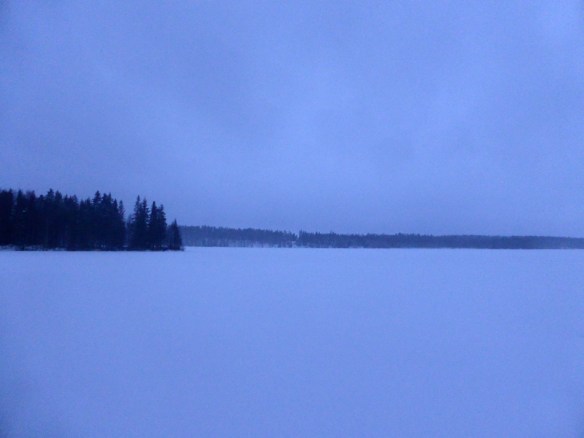by Maggie Molloy
This week’s music calendar has everything from Christmas classics to electroacoustic space travel!
Zero-G: Triptet + Dempster & Smith

Triptet is an imaginative electro-infused trio whose music is out of this world—literally. The group’s electroacoustic music combines classical instruments with electronics to create a truly otherworldly sound.
Triptet is composed of Tom Baker on fretless guitar, theremin, and laptop, Michael Monhart on saxophones, laptop, and percussion, and Greg Campbell on drums, percussion, French horn and budget electronics. Their music is inspired by their shared interest in musical space travel, as well as their admiration for the prolific jazz composer, poet, and philosopher Sun Ra.
Triptet will perform this Friday, Dec. 5 at 8 p.m. in the Chapel Performance Space at the Good Shepherd Center in Wallingford. They will be joined by clarinetist Bill Smith and trombonist Stuart Dempster for their second set.
The Saddest Holiday Concert Ever!

Embrace the Christmas nostalgia head-on this weekend with a performance of the season’s saddest, sappiest, most sentimental Christmas classics.
“The Saddest Holiday Concert Ever!” features a vocalist and two 14-string lutists performing sappy classics from across the centuries. The concert features Baroque masterpieces by Handel and Merula, old-fashioned Americana tunes, new music by Seattle-based composer Aaron Grad, and contemporary classics from Judy Garland, Joni Mitchell, and Elvis Presley. And of course, no sentimental holiday concert would be complete without music from “A Charlie Brown Christmas.”
The concert is this Sunday, Dec. 7 at 7:30 p.m. at Queen Anne Christian Church.
Portland Cello Project’s Holiday Spectacular

Nothing says Christmas quite like a charming chorus of cellos.
This weekend the genre-bending Portland Cello Project is coming up to Seattle to share an evening of holiday classics in their “Holiday Spectacular” concert. The cellists will be joined by special guest Ural Thomas and the Pain. Thomas is a Portland-based soul singer who once shared the stage with the likes of Otis Redding and James Brown, and the Pain is his nine-piece band of young, soulful Portlanders. Seattle composer Nat Evans’ Music for Cello Ensemble with Tea Soloist will be a warm, intriguing offering on this program.
The concert is this Sunday, Dec. 7 at 7:30 p.m. at Benaroya Hall’s Illsley Ball Nordstrom Recital Hall.
My Brightest Diamond at the Crocodile

Not many musicians can shine in both classical and art-rock musical settings—but Shara Worden is a sparkling star no matter what she’s playing. Her avant-garde rock music project, My Brightest Diamond, combines her operatic vocal training and classical composition studies with a theatrical performance art aesthetic.
Next weekend My Brightest Diamond is bringing some glitter and grace to Seattle with a show at the Crocodile. The show is part of a U.S. tour in support of her new album, “This is My Hand,” which was released this past September. The album combines elements of opera, cabaret, chamber music, rock, and even electronic, drawing from Worden’s many multifaceted musical endeavors over the course of her career.
The concert is next Saturday, Dec. 6 at the Crocodile at 8 p.m.
Ahamefule Oluo’s “Now I’m Fine” at On the Boards

Brighten up one of those dreary Seattle nights with a trip to “Now I’m Fine,” a multidisciplinary music event combining comedy with classical music.
“Now I’m Fine” is an experimental pop opera about holding it together, starring comedian, musician, and storyteller Ahamefule Oluo. The performance draws from his personal stories about illness, sorrow, hope, and other emotions and experiences to which all of us can relate. Unlike the rest of us, though, Oluo tells these personal stories with the help of a 17-piece orchestra and a fantastic cast of performers.
The stories range from tragic to triumphant, travelling through the happy, the sad, and even the awkward. The result is a theatrical production filled with laughter, life lessons, and a lot of beautiful music.
The show runs Dec. 4-7 at On the Boards’ Merrill Wright Mainstage Theater. Shows are at 8 p.m. Thursday through Saturday and 5 p.m. on Sunday.
The Esoterics’ Irving Fine Centennial

Prepare to fall down the rabbit hole next weekend when the Esoterics bring to life poetry from Lewis Carroll’s “Alice in Wonderland.”
The Seattle-based vocal ensemble is performing neoclassical composer Irving Fine’s musical settings of six poems from “Alice in Wonderland” as part of a larger performance commemorating his 100th birthday. But that’s not all—they will also perform essentially all of Fine’s other choral works, including his poignant “Hour Glass,” his witty and virtuosic “Choral New Yorker,” his musical setting of the Yiddish poem “An Old Song,” and much more.
The performances are Friday, Dec. 5 at St. Stephen’s Episcopal Church at 8 p.m., Saturday, Dec. 6 at All Pilgrims Christian Church at 8 p.m., and Sunday, Dec. 7 at Holy Rosary Catholic Church at 3 p.m.










